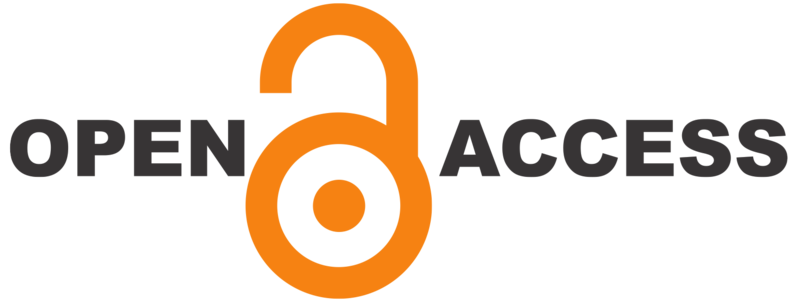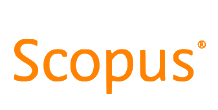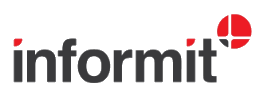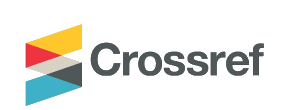Australian employer perceptions of unprofessional social media behaviour and its impact on graduate employability
DOI:
https://doi.org/10.21153/jtlge2019vol10no2art857Keywords:
social media, job-recruitment, employability, professional behaviour, employment, personal brandingAbstract
Social media has become a tool used for the process of employee recruitment in a range of industries. The technology is utilised by job candidates and by employers and job-recruiters to screen and source suitable staff for their organisations. Research has investigated issues relating to ethics, privacy and accuracy regarding employers’ use of social media to screen prospective employees. Yet, limited research has been conducted to investigate employer perceptions of prospective/current employees’ unprofessional social media behavior. Our study involved a survey of 396 Australia employers from a range of industries to explore the influence of job-candidates’ social media presence on employer decision-making and the most unprofessional social media behaviors according to employers. Our investigation found 82% of employers are influenced by a job candidate’s social media presence and using social media to intentionally cause harm to others was perceived by employers as the most unprofessional social media behavior. The findings from this study will assist educators in guiding university students and graduates to meet industry expectations as professionals and provide scholars with new knowledge as to what is deemed to be unacceptable behavior in a professional context at this point in the evolution of social media.
Metrics
References
Aggerholm, H. K., & Andersen, S. E. (2018). Social media recruitment 3.0: Toward a new paradigm of strategic recruitment communication. Journal of Communication Management, 22(2), 122–137.
Allen, W.A., & Smith, A.R. (2012). Effects of video podcasting on psychomotor and cognitive performance, attitudes and study behavior of student physical therapists. Innovative Education & Teaching International, 49(4), 401–414.
Archer‐Brown, C., Marder, B., Calvard, T., & Kowalski, T. (2018). Hybrid social media: Employees’ use of a boundary‐spanning technology. New Technology, Work and Employment, 33(1), 74–93.
Arruda, W., & Dixson, K. (2010). Career distinction: Stand out by building your brand. John Wiley & Sons.
Baert, S. (2018). Facebook profile picture appearance affects recruiters’ first hiring decisions. New Media & Society, 20(3), 1220-–1239.
Baptista, J., Wilson, A. D., Galliers, R. D., & Bynghall, S. (2017). Social media and the emergence of reflexiveness as a new capability for open strategy. Long Range Planning, 50(3), 322–336.
Barlow, C. J., Morrison, S., Stephens, H. O., Jenkins, E., Bailey, M. J., & Pilcher, D. (2015). Unprofessional behaviour on social media by medical students. Medical Journal of Australia, 203(11), 439–439.
Beckett, L. (2017). Trump digital director says Facebook helped win the White House. Accessed 13 March 2019 <https://www.theguardian.com/technology/2017/oct/08/trump-digital-director-brad-parscale-facebook-advertising>
Brame, C. J. (2016). Effective educational videos: Principles and guidelines for maximizing student learning from video content. CBE—Life Sciences Education, 15(4), es6.
Brouer, R., Stefanone, M., Badawy, R., & Egnoto, M. (2017). Gender (in) consistent communication via social media and hireability: An exploratory study. In Proceedings of the 50th Hawaii International Conference on System Sciences (pp. 2223–2232).
Caers, R., & Castelyns, V. (2011). LinkedIn and Facebook in Belgium: The influences and biases of social network sites in recruitment and selection procedures. Social Science Computer Review, 29(4), 437–448.
CEO.com. (2015). 2015 Social CEO Report, accessed 13 March 2019,
Chung, F. (2019). ‘Probably doing her fake tan’: Voicemail fail reveals employer Facebook-stalked Perth woman, News.com.au. Accessed 3 June 2019,
Davis, J., Folse, K., Billiot, A., Bissonnette, R., Hagan, J., & Stafford, I. (2017). Social media etiquette among healthcare professionals, [20G]. Obstetrics & Gynecology, 129(5), 76S.
De Gagne, J. C., Yamane, S. S., Conklin, J. L., Chang, J., & Kang, H. S. (2018). Social media use and cybercivility guidelines in US nursing schools: A review of websites. Journal of Professional Nursing, 34(1), 35–41.
Demek, K. C., Raschke, R. L., Janvrin, D. J., & Dilla, W. N. (2018). Do organisations use a formalized risk management process to address social media risk? International Journal of Accounting Information Systems, 28, 31–44.
Doherty, R. (2010). Getting social with recruitment. Strategic HR Review, 9(6), 11–15.
Dutta, D. (2014). Tweet your tune—social media, the new Pied Piper in talent acquisition. Vikalpa, 39(3), 93–104.
El Ouirdi, A., El Ouirdi, M., Segers, J., & Henderickx, E. (2015). Employees' use of social media technologies:A methodological and thematic review. Behaviour & Information Technology, 34(5), 454–464.
Francis, D., & Wagner, K. (2018). Social media policies in the workplace–unjustifiable constitutional limitation? Without Prejudice, 18(4), 44–45.
Fullwood, C., Quinn, S., Chen-Wilson, J., Chadwick, D., & Reynolds, K. (2015). Put on a smiley face: Textspeak and personality perceptions. Cyberpsychology, Behavior, and Social Networking, 18(3), 147–151.
Gehl, R.W. (2011). Ladders, samurai, and blue collars: Personal branding in Web 2.0. First Monday, 16(9).
Hsin, W.J., & Cigas, J. (2013). Short videos improve student learning in online education. Journal of Computer Sciences in Colleges, 28(5), 253–259.
Jeske, D., & Shultz, K. S. (2016). Using social media content for screening in recruitment and selection: Pros and cons. Work, Employment and Society, 30(3), 535–546.
Jindal, P., & Shaikh, M. (2014). Social networking sites–Emerging as effective tools for attracting talent. Gavesana Journal of Management, 6(2), 48–55.
Karl, K., Peluchette, J., & Schlaegel, C. (2010). Who’s posting Facebook faux pas? A cross-cultural examination of personality differences. International Journal of Selection and Assessment, 18(2), 174–186.
Kay, R.H. (2012). Exploring the use of video podcasts in education: A comprehensive review of the literature. Computer and Human Behavior, 28(3), 820–831.
Kenny, P., & Johnson, I. G. (2016). Social media use, attitudes, behaviors and perceptions of online professionalism amongst dental students. British Dental Journal, 221(10), 651–655.
Khedher, M. (2014). Personal branding phenomenon. International Journal of Information, Business and Management, 6(2), 29–40.
Kietzmann, J.H., Hermkens, K., McCarthy, I.P., & Silvestre, B.S. (2011). Social media? Get serious! Understanding the functional building blocks of social media. Business horizons, 54(3), 241–251.
Kinsky, E.S., Freberg, K., Kim, C., Kushin, M., & Ward, W. (2016). Hootsuite University: Equipping academics and future PR professionals for social media success. Public Relations Education, 2(1), 1-18.
Kissel, P., & Büttgen, M. (2015). Using social media to communicate employer brand identity: The impact on corporate image and employer attractiveness. Journal of Brand Management, 22(9), 755–777.
Kitsis, E. A., Milan, F. B., Cohen, H. W., Myers, D., Herron, P., Mcevoy, M., Weingarten, J., & Grayson, M. S. (2016). Who’s misbehaving? Perceptions of unprofessional social media use by medical students and faculty. BMC Medical Education, 16, 67.
Koch, T., Gerber, C., & De Klerk, J. J. (2018). The impact of social media on recruitment: Are you LinkedIn? SA Journal of Human Resource Management, 16(1), 1–14.
Koo, K., Bowman, M. S., Ficko, Z., & Gormley, E. A. (2018). Older and wiser? Changes in unprofessional content on urologists’ social media after transition from residency to practice. BJU International, 122(2), 337-343.
Kooij, D. T., & Boon, C. (2018). Perceptions of HR practices, person–organisation fit, and affective commitment: The moderating role of career stage. Human Resource Management Journal, 28(1), 61-75.
Ladkin, A. B., & Buhalis, D. (2016). Online and social media recruitment: Hospitality employer and prospective employee considerations. International Journal of Contemporary Hospitality Management, 28(2), 327–345.
Lam, H. (2016). Social media dilemmas in the employment context. Employee Relations, 38(3), 420-437.
Langenfeld, S. J., Cook, G., Sudbeck, C., Luers, T. & Schenarts, P. J. (2014). An assessment of unprofessional behaviour among surgical residents on Facebook: a warning of the dangers of social media. Journal of Surgical Education, 71(6), e28-32.
Lloyd, S.A., & Robertson, C.L. (2012). Screencast tutorials enhance student learning of statistics. Teaching of Psychology, 39(1), 67–71.
Madera, J. M. (2012). Using social networking websites as a selection tool: The role of selection process fairness and job pursuit intentions. International Journal of Hospitality Management, 31(4), 1276–1282.
Mcdonald, P., & Thompson, P. (2016). Social media(tion) and the reshaping of public/private boundaries in employment relations. International Journal of Management Reviews, 18, 69–84.
McNally, D., & Speak, K.D. (2003). Be your own brand: A breakthrough formula for standing out from the crowd. San Francisco: Berrett-Koehler.
Melanthiou, Y., Pavlou, F., & Constantinou, E. (2015). The use of social network sites as an e-recruitment tool. Journal of Transnational Management, 20(1), 31–49.
Montoya, P., & Vandehey, T. (2002). The personal branding phenomenon: Realize greater influence, explosive income growth and rapid career advancement by applying the branding techniques of Michael, Martha & Oprah. Santa Ana, CA: Peter Montoya Inc.
Nikolaou, I. (2014). Social networking web sites in job search and employee recruitment. International Journal of Selection and Assessment, 22(2), 179–189.
O’Connor, K. W., & Schmidt, G. B. (2018). Social media, data privacy, and the internet of people, things and services in the workplace: A legal and organizational perspective. In The internet of people, things and services (pp. 89-107). Routledge.
Offong, G. O., & Costello, J. (2017). Enterprise social media impact on human resource practices. In Evidence-based HRM: A global forum for empirical scholarship (pp. 328–343). Emerald Group Publishing Limited.
Pereira, I., Cunningham, A. M., Moreau, K., Sherbino, J., & Jalali, A. (2015). Thou shalt not tweet unprofessionally: An appreciative inquiry into the professional use of social media. Postgraduate Medical Journal, 91, 561–564.
Peters, T. (1997). The brand called you. Fast company, 10(10), 83–90.
Ponce, B. A., Determann, J. R., Boohaker, H. A., Sheppard, E., Mcgwin Jr, G., & Theiss, S. (2013). Social networking profiles and professionalism issues in residency applicants: An original study-cohort study. Journal of Surgical Education, 70(4), 502–507.
Rackaway, C. (2012). Video killed the textbook star? Use of multimedia supplements to enhance student learning. Journal of Political Science Education 8(2), 189–200.
Ramsay, M. (2010). Social media etiquette: A guide and checklist to the benefits and perils of social marketing. Journal of Database Marketing & Customer Strategy Management, 17(3-4), 257–261.
Sánchez Abril, P., Levin, A., & Del Riego, A. (2012). Blurred boundaries: Social media privacy and the twenty‐first‐century employee. American Business Law Journal, 49(1), 63–124.
Saros-Rogobete, M. & Sav, A.-g. (2016). Research regarding the social media recruitment tools in Romania. Informatica Economica, 20(2), 56–66.
Sayers, J. G., & Fachira, I. (2015). Telling tales: Online comic and gripe story‐sharing by service workers about difficult customers. New Technology, Work and Employment, 30(2), 128–144.
Singh, K., & Sharma, S. (2014). Effective use of social media for talent acquisition and recruitment. International Journal of Intercultural Information Management, 4(4), 228–237.
Sivertzen, A.-m., Nilsen, E. R., & Olafsen, A. H. (2013). Employer branding: Employer attractiveness and the use of social media. Journal of Product & Brand Management, 22(7), 473–483.
Slovensky, R., & Ross, W. H. (2012). Should human resource managers use social media to screen job applicants? Managerial and Legal Issues in the USA, 14(1), 55–69.
Statista. (2019). Number of social media users worldwide from 2010 to 2021 (in billions), accessed 13 March 2019, <https://www.statista.com/statistics/278414/number-of-worldwide-social-network-users/>
Sutherland, K. (2013). Social media puts HR ethics under the spotlight. Accessed 13 March 2019, <https://theconversation.com/social-media-puts-hr-ethics-under-the-spotlight-14208>
Taguchi, K., & Ackerman, L. (2014). The Infographic: Is there a place in higher education? In T. Bastiaens (Ed.), Proceedings of World Conference on E-Learning (pp. 1901-1905). New Orleans, LA, USA: Association for the Advancement of Computing in Education (AACE). Retrieved June 14, 2019 from https://www.learntechlib.org/primary/p/148882/.
Valdez, A.C., Schaar, A.K., & Ziefle, M. (2013). Personality influences on etiquette requirements for social media in the work context. In International Conference on Human Factors in Computing and Informatics (pp. 427–446). Berlin, Heidelberg: Springer.
Valdez, A.C., Schaar, A.K., Bender, J., Aghassi, S., Schuh, G., & Ziefle, M. (2016). Social media applications for knowledge exchange in organisations. In L. Razmerita, G. Phillips-Wren & L. Jain (Eds), Innovations in Knowledge Management (pp. 147-176). Berlin, Heidelberg: Springer.
Survey Monkey. (2019). Survey Monkey.com, accessed 15 November, 2019, <https://www.surveymonkey.com//>
Vandenbroek, P. (2018). Employment by industry statistics: A quick guide, accessed 13 March, 2019, <https://www.aph.gov.au/About_Parliament/Parliamentary_Departments/Parliamentary_Library/pubs/rp/rp1718/Quick_Guides/EmployIndustry>
Van De Ven, N., Bogaert, A., Serlie, A., Brandt, M. J., & Denissen, J. J. (2017). Personality perception based on LinkedIn profiles. Journal of Managerial Psychology, 32(6), 418–429.
Van Iddekinge, C. H., Lanivich, S. E., Roth, P. L., & Junco, E. (2016). Social media for selection? Validity and adverse impact potential of a Facebook-based assessment. Journal of Management, 42(7), 1811–1835.
Van Zoonen, W., & Rice, R. E. (2017). Paradoxical implications of personal social media use for work. New Technology, Work and Employment, 32(3), 228–246.
Walton, J. M., White, J., & Ross, S. (2015). What's on YOUR Facebook profile? Evaluation of an educational intervention to promote appropriate use of privacy settings by medical students on social networking sites. Medical Education Online, 20(1), article 28708.
Weiss, J. (2018). Woman loses NASA internship after swearing on Twitter at a National Space Council member. Science Alert – Business Insider, accessed 03 June 2019, < https://www.sciencealert.com/a-woman-lost-a-nasa-scholarship-after-getting-into-twitter-beef-with-a-member-of-nasa-s-space-council/>
Withers, R. (2019). 'She's probably doing her fake tan': Young woman, 25, is denied her dream job because recruiters didn't like her Facebook SELFIES - and she found out in a cruel voicemail message. Daily Mail Australia, accessed 03 June 2019, <https://www.dailymail.co.uk/news/article-7074991/Accidental-voicemail-recording-reveals-employers-judging-applicant-Facebook-selfies.html/>
fies.html/>











